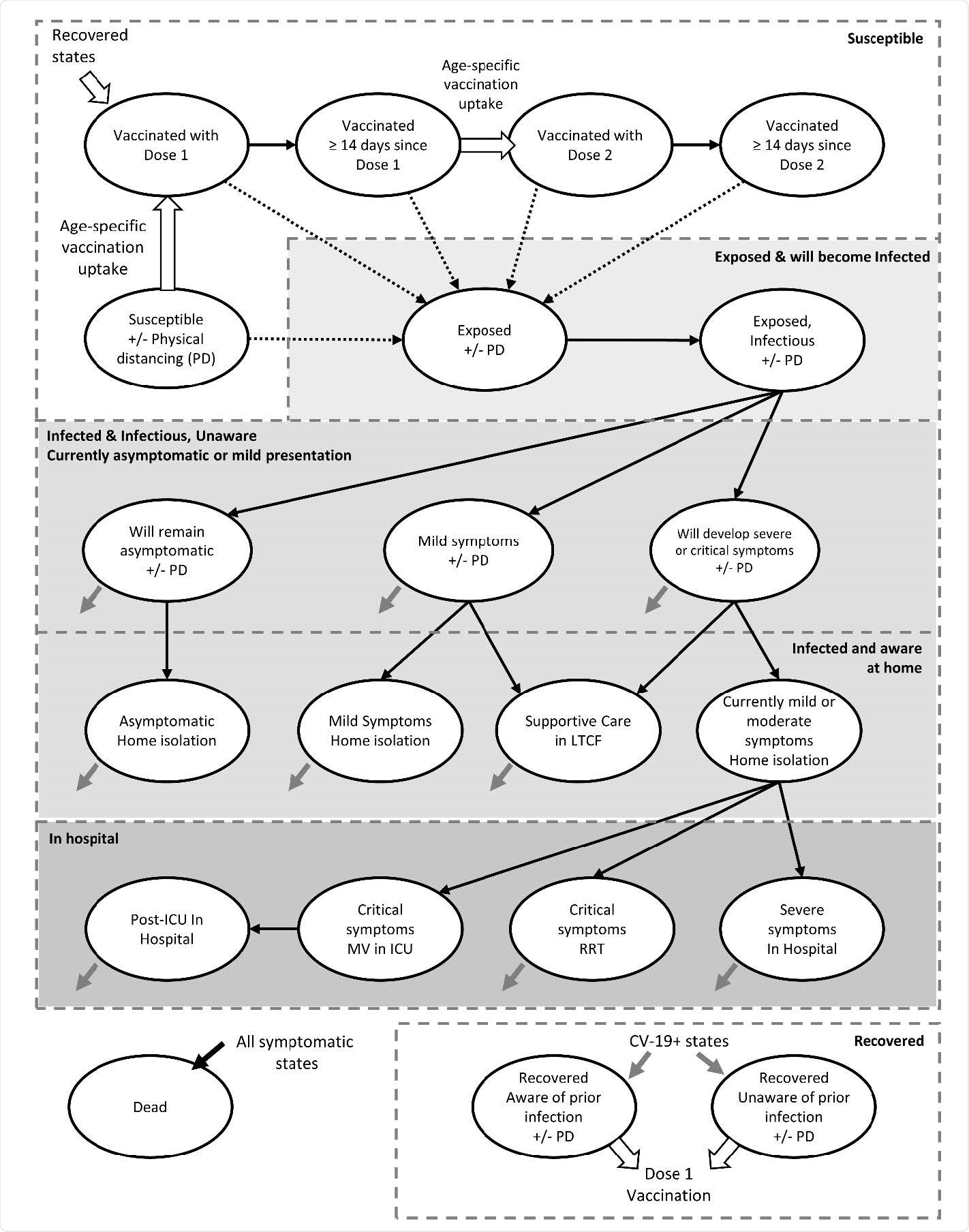Each wave of the COVID-19 pandemic raises different levels of public health challenges. For example, a significant 3rd wave in Ontario, Canada, in Spring 2021 was driven by the Alpha variant and led to stay-at-home orders and school closures. Along with a mass vaccination campaign, a gradual relaxation of restrictions has helped keep the number of infections low during the summer. However, with the more infectious severe acute respiratory syndrome coronavirus 2 (SARS-CoV-2) Delta variant becoming the dominant circulating strain across Ontario, COVID-19 cases are steadily increasing, indicating the possibility of a Fall resurgence.

 *Important notice: medRxiv publishes preliminary scientific reports that are not peer-reviewed and, therefore, should not be regarded as conclusive, guide clinical practice/health-related behavior, or treated as established information.
*Important notice: medRxiv publishes preliminary scientific reports that are not peer-reviewed and, therefore, should not be regarded as conclusive, guide clinical practice/health-related behavior, or treated as established information.
Evaluating if current vaccine coverage and public health measures are sufficient to prevent a possible Fall resurgence in Ontario
Researchers from Canada recently attempted to project the number of COVID-19 cases and the demand for acute hospital resources for Fall 2021 in a mid-sized southwestern Ontario community. They sought to evaluate if current vaccine coverage and contact reduction levels are sufficient to mitigate a possible 4th wave driven by the Delta variant, or if stricter public health measures need to be reinstituted. This study is currently available on the medRxiv* preprint server while awaiting peer review.
The researchers developed an age-stratified dynamic transmission model of COVID-19 in a city with a population of 500,000 that is currently experiencing a relatively low but increasing SARS-CoV-2 infection rate in Step 3 of Ontario’s Wave 3 recovery.
They parameterized the model using the medical literature and government reports and estimated the current level of contact reduction by calibrating to cases and hospitalizations. They also projected the number of infections and hospitalizations and the time to re-instate more stringent public health measures over the Fall of 2021 under various vaccine coverage and contact reduction levels.

Model schematic
Results show that contact reduction by 27% to 30% from pre-pandemic levels could prevent high case volumes and the reinstatement of public health measures
The results show that the current level of contact reductions, a 17% reduction from pre-pandemic contact levels, could lead to COVID-related admissions surpassing 20% of pre-pandemic critical care capacity by late October. This could lead to the cancellation of elective surgeries and other non-COVID-related healthcare services.
“Reducing contacts by 27% to 30%, compared to pre-pandemic contact levels, prevents high case volumes and the reinstatement of more restrictive public health measures.”
At high vaccination and mask usage levels, a moderate extra effort to reduce contacts (30% reduction from pre-pandemic contact levels) is required to avoid re-instating strong public health measures. Compared to previous waves, the age distribution of cases and hospitalizations can move to younger individuals, and the estimated pediatric critical care hospitalization numbers may significantly exceed 20% of capacity.
“Ongoing mask-wearing and reducing contacts by, on average, 30% is required to prevent reinstatement of restrictive policies as hospital resources, again, become overwhelmed.”
Immediate moderate public health measures can help prevent severe and disruptive measures later
The increased transmissibility and severity and potential vaccine resistance of the Delta variant have transformed the nature of the COVID-19 pandemic. High vaccination rates in people over 12 years of age are no longer sufficient to prevent a Fall resurgence in Ontario.
“Our analysis found that at high levels of vaccination and relatively high levels of mask-wearing, a moderate additional effort to reduce contacts is necessary to avoid re-instating intensive public health measures.”
The findings of this study show that high vaccination coverage rates and mask usage in public settings will not be enough to prevent a resurgence of COVID-19 in Fall 2021 in a mid-sized southwestern Ontario community. This analysis shows that urgent, moderate public health measures are needed in order to avoid the need for more stringent and disruptive interventions later on.
“Our analysis indicates that immediate moderate public health measures can prevent the necessity for more intense, disruptive, and difficult to sustain measures later.”

 *Important notice: medRxiv publishes preliminary scientific reports that are not peer-reviewed and, therefore, should not be regarded as conclusive, guide clinical practice/health-related behavior, or treated as established information.
*Important notice: medRxiv publishes preliminary scientific reports that are not peer-reviewed and, therefore, should not be regarded as conclusive, guide clinical practice/health-related behavior, or treated as established information.